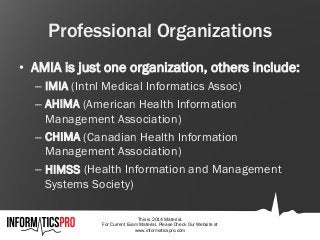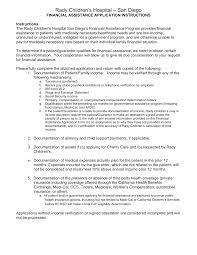
You've likely heard of home health agencies if you're looking for a Louisville home care provider. While there have been some recent expansions in Jefferson County, no new home healthcare agencies have been allowed into the city since 2013. Baptist Home Health Care Louisville, which is a local provider, has opposed the state's application for the agency. In response, the city's Planning Commission approved an ordinance prohibiting the new home healthcare agency from opening in Jefferson County.
Home healthcare can be an alternative to hospitalization or facilities.
A recent Alliance for Home Health Quality and Innovation study found that home-based health care was a cost-effective alternative to facilities and hospitals for almost 40% Medicare patients. Home health care was found to be the most affordable option for Medicare patients. It accounted for 38.7% Medicare episodes and 27.8% Medicare payments. Although it is not the best option, home care can still be a very effective alternative.

It increases mobility
Home health care has become a vital part of aging Americans' lives. Its primary aim is to provide better and safer living conditions for patients in their own homes. Home health aids can help patients avoid falling and injury by providing assistance with daily tasks. Their presence also allows family members to relax and have time to do other things. Patients need to find the right provider for their needs.
It assists with everyday activities
Kentucky-based home healthcare agency offers a wide range of senior citizen services. They serve Louisville, as well as the surrounding area, and pride their selves on their compassion, professionalism and experience. Their staff is well-trained and skilled, with some even being medical doctors. They provide 24 hour support and can monitor diets, send correspondence, and plan outings. Some services also include transportation to medical appointments, social functions, and other assistance.
It improves communication between doctors
Improved communication between patients and physicians is one of the many benefits of home healthcare. While physicians are concerned for their patients' health at home, they may not have the time or resources to monitor them. A recent survey found that a third of physicians feel inept to deal with chronic care patient issues. It can be easier to communicate with patients and provide better care by having one point of contact between home health agencies and patients. There are many factors that can improve communication between home-health agencies and doctors.

It is available statewide
Virginia Medicaid and Medicare cover home health care. However, there are some services that are not covered. Home health services may include medication management, personal care aide services, and bathing assistance. Medicaid eligibility rules for these services are more flexible in Virginia than they are elsewhere. Virginia's rules on long-term healthcare are more liberal than in other states. Unfortunately, there is no Alzheimer's Assisted Living Waiver available in the state.
FAQ
What is the distinction between the health service and the health system?
Health systems can be more than just providing healthcare services. They encompass everything that happens in the overall context of people’s lives, such as education, employment, housing, and social security.
Healthcare services focus on specific conditions like cancer, diabetes and mental illness.
They may also refer the provision of generalist primary health care services by community-based professionals working under an NHS hospital trust.
What are the different health care services?
A health-care service is a medical establishment that provides healthcare services to patients. A hospital is an example. It usually includes many departments such as the emergency department, intensive care unit, operating room, pharmacy, outpatient clinics, etc.
What are the three primary goals of a healthcare system?
Healthcare systems should have three primary goals: Provide affordable healthcare, improve health outcomes and reduce costs.
These goals were incorporated into the framework Triple Aim. It is based on research by the Institute of Healthcare Improvement (IHI). This was published by IHI in 2008.
This framework aims to ensure that we all focus on the same goals and can achieve each goal while not compromising other goals.
They don't compete against each other. They support one another.
As an example, if access to care is improved, fewer people die from inability to pay. This lowers the overall cost for care.
We can also improve the quality of our care to achieve our first goal, which is to provide care at an affordable cost. And it improves outcomes.
Statistics
- About 14 percent of Americans have chronic kidney disease. (rasmussen.edu)
- For instance, Chinese hospital charges tend toward 50% for drugs, another major percentage for equipment, and a small percentage for healthcare professional fees. (en.wikipedia.org)
- The healthcare sector is one of the largest and most complex in the U.S. economy, accounting for 18% of gross domestic product (GDP) in 2020.1 (investopedia.com)
- Consuming over 10 percent of [3] (en.wikipedia.org)
- Price Increases, Aging Push Sector To 20 Percent Of Economy". (en.wikipedia.org)
External Links
How To
What is the Healthcare Industry Value Chain
The entire healthcare industry value-chain includes all activities related to providing healthcare services to patients. This includes both the business processes in hospitals and clinics, as well the supply chains that connect them with other providers like doctors, pharmacists, insurers, manufacturers, wholesalers, distributors, etc. The end result is a continuum of care that begins with diagnosis and ends with discharge.
The value chain is made up of four major components:
-
Business Processes – These are the tasks that individuals perform throughout the delivery of health care. One example is that a doctor might do an examination and prescribe medication. The prescription will then be sent to a pharmacy for dispensing. Every step must be done efficiently and accurately.
-
Supply Chains are all the organizations responsible for making sure the right supplies reach their intended recipients at the right time. One hospital may have many suppliers. This includes pharmacies and lab testing facilities as well as imaging centers and janitorial staff.
-
Networked organizations - These entities must communicate with each other in order to coordinate. Hospitals are often composed of many departments. Each department will have its own set office and telephone number. The central point will allow employees to get up-to-date information from any department.
-
Information Technology Systems- IT is vital in ensuring smooth business processes. Without it, everything could go down quickly. IT also allows you to integrate new technologies in the system. If doctors want to integrate electronic medical records in their workflow, they can use secure network connections.